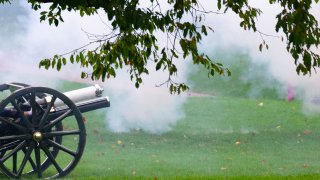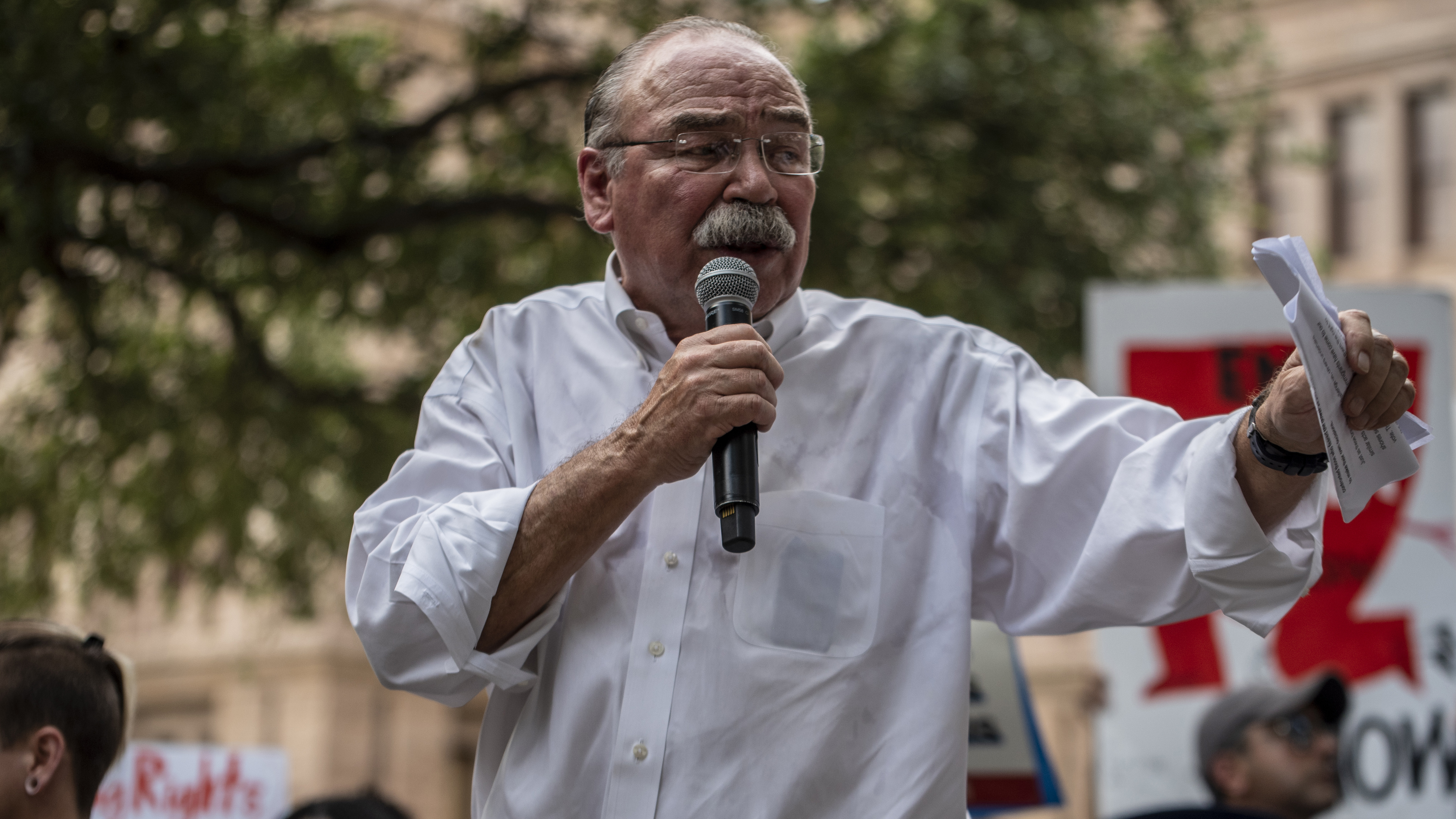
Even after 25 years of having Joint Base San Antonio-Fort Sam Houston for a neighbor, Robert and Nancy Parker still look forward to the Army post's time-honored routine that rattles their bedroom window every weekday morning at 6:30 a.m.
It's the wake-up call heard around the heart of Military City U.S.A. For at least 125 years, San Antonio has started its day with a bang, or rather a boom, courtesy a blank round fired from a cannon at the base of Fort Sam Houston's main flagpole.
The morning cannon, a 75 mm Pack Howitzer, punctuates the raising of the flag to the theme of reveille piped through the installation's loudspeakers.
"The cannon is a lot of fun," Robert Parker told the San Antonio Express-News. Parker is a retired Air Force major who's saluted his own share of bugle calls at dusk and dawn. "It's just history. It's just a tradition."
Another cannon blast at 5:30 p.m. accompanies the lowering of the flag to the prerecorded strains of retreat. Times are set at the installation commander's discretion.
It's a resounding blast that reverberates throughout Fort Sam and beyond its historic confines, as much an echo of the nation's past as San Antonio's own military roots.
Fort Sam Houston Museum Director Jacqueline Davis noted that as early as the 1840s, armed forces used a drum roll with reveille after sunrise and retreat at sunset to gather the troops for roll call. But as military posts grew, they needed something louder to reach their personnel across greater distances. As early as 1889, the Army had a regulation requiring that posts with a cannon fire it each day in the morning and evening.
Texas News
News from around the state of Texas.
The roll call doesn't happen anymore, but Davis noted the cannon firing is a tradition that continues at virtually all posts.
"A piece of artillery is actually a weapon of war," Davis said. "But the sound it makes is the sound of freedom."
According to the Fort Sam Houston Museum, one of the earliest references to its daily cannon blasts is an 1895 article in the Galveston Daily News that refers to hearing "the evening gun," Army jargon for cannon. The 1916 book "Texas, The Marvellous," describes how the "roar of the morning gun disturbs the silence of the city."
And in his 1937 autobiography, "A Maverick American," future San Antonio Mayor Maury Maverick rhapsodizes that "for a dead moral certainty a great rumble of a cannon is heard at 6:15 -- the morning cannon -- then a sound of trumpets and drums, for at old Fort Sam Houston the soldiers are rising for another day."
These days at Fort Sam Houston, that starts with a group of soldiers from the Army's Medical Center of Excellence on flag detail and members of the Army North Caisson Platoon who discharge the cannon.
"It's basically the base punching in and punching out," said Sgt. 1st Class Timothy French, the non-commissioned officer in charge of the platoon that fires the cannon. "(But) there's definitely tradition involved that people do take to heart."
Earlier this month, Spec. Joshua Torres did the honors at Sgt. Alvin Dorsey's command. As Torres knelt at the cannon, Dorsey stood nearby with an arm up as if in mid-salute while a handful of soldiers attached the flag to the pole. At precisely 6:30 a.m., Dorsey snapped his arm down to signal the booming discharge and raising of the flag.
As for the volume of that blast, French said its concussive report and decibel level are considered negligible as far as safety is concerned. Anywhere outside a 5-foot radius from the cannon is considered a safe zone, he said, though he noted the cannonier and non-commissioned officer in charge of firing the Howitzer do wear ear protection.
Nevertheless, that cannon fire can be heard for miles, especially during dense cloud cover that bends the sound waves back down to the ground, resulting in louder noise levels.
Davis recalled how when she first moved into her home just south of the Olmos Softball Field in 2004, she would hear what sounded like someone slamming a car door every morning at 5:30 a.m. She soon realized it was the Fort Sam cannon being fired 5 miles away.
Robert Parker said many residents around Fort Sam Houston have a military background, some active and some retired, so they're used to the daily cannon blast. But even civilians in the area don't seem to mind. Parker, who's also president of his neighborhood homeowners association, said complaints never come up at meetings.



